African Nguni cow hide patch cushion

Click on image for larger view
Cow Hide Patch Cushions - Brown white
$39-00
Region: South Africa
Material: Nguni cow hide
Size: 45cm x 45cm (W x L) - 5cm patch
Add to Cart
African Nguni cow hide patch cushion
Size: 45cm x 45cm (L x W)
A beautiful African handcrafted Nguni hide patch cushion. The cushions are made in 2 colours black and white and brown and white and have either 10cm or 5cm hide square patches.
Genuine African Nguni hide patch cushion from South Africa that has been stitched with different pattern Nguni cow hide patches.
This Nguni hide patch cushion is handcrafted into one solid cushion with both the front having the Nguni cow patches and the back a suede material and zipper. We do not send the cushion with the stuffing as that adds allot of volume to the cushion and will increase the shipping cost allot. Should you want the stuffing added let us know and we will quote on shipping with the stuffing.
A beautiful African Nguni cow hide cushion that have became very popular choices for their wonderful patterns and colors.
African Nguni skin cushion have
became very popular choices for their
wonderful patterns and colors. Nguni cow is a breed of African cow found in
Southern Africa and mainly associated
with the Zulu people. The Nguni cow hide
cushion you purchase and receive may
differ just slightly in size, look,
and/or color from the Nguni cow hide
cushion shown in the picture because of
the nature of animal hides, no two will
be exactly the same.
Other styles available below or return to our main African cushion page
Cow Hide Patch Cushions - brown & white
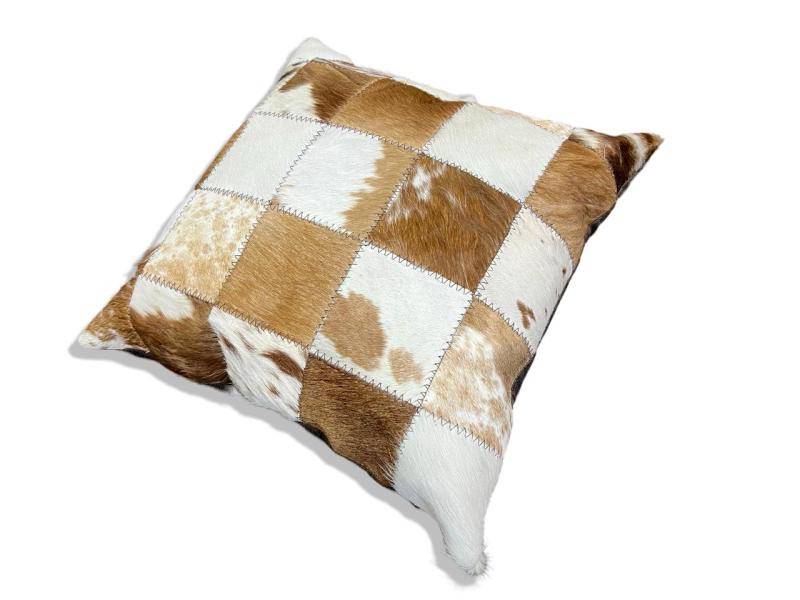
$39-00
Region: South Africa
Material: Nguni cow hide
Size: 45cm x 45cm (W x L) - 10cm patch
Cow Hide Patch Cushions - black & white
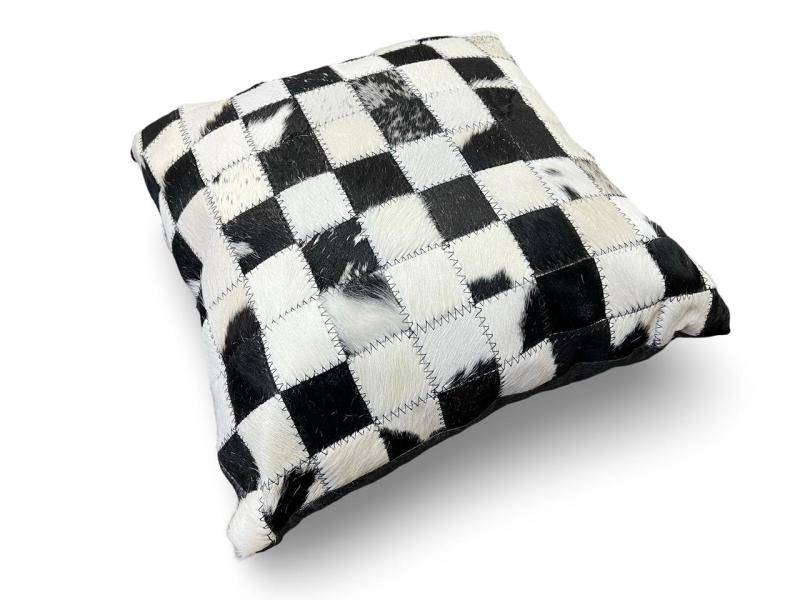
$39-00
Region: South Africa
Material: Nguni cow hide
Size: 45cm x 45cm (W x L) - 5cm patch
Cow Hide Patch Cushions - brown & white
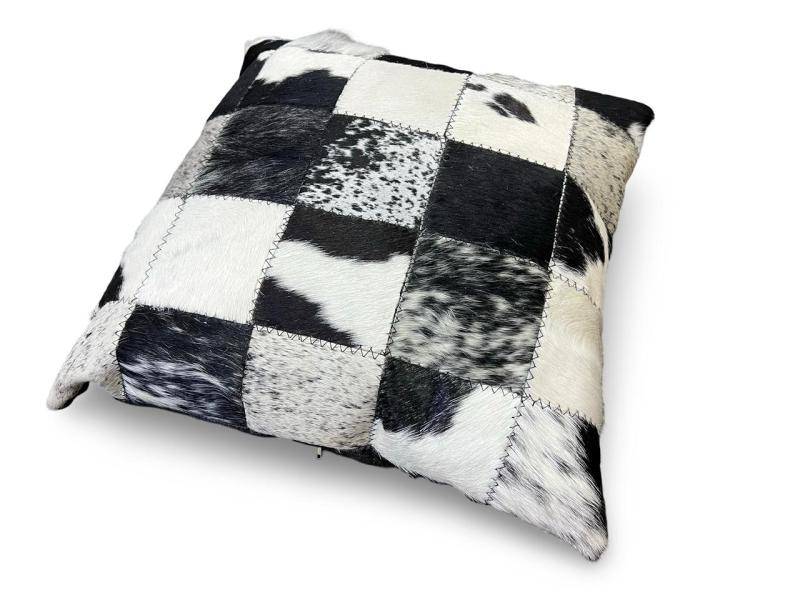
$39-00
Region: South Africa
Material: Nguni cow hide
Size: 45cm x 45cm (W x L) - 10cm patch
Cow Hide Cushions - Brown white

$55-00
Region: South Africa
Material: Nguni cow hide
Size: 40cm x 40cm
Cow Hide Cushions - Black white

$55-00
Region: South Africa
Material: Nguni cow hide
Size: 40cm x 40cm
Cow Hide Bolster Cushions - Black
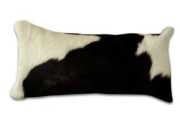
$55-00
Region: South Africa
Material: Nguni cow hide
Size: 20cm x 60cm
Other styles available below or return to our main African cushion page
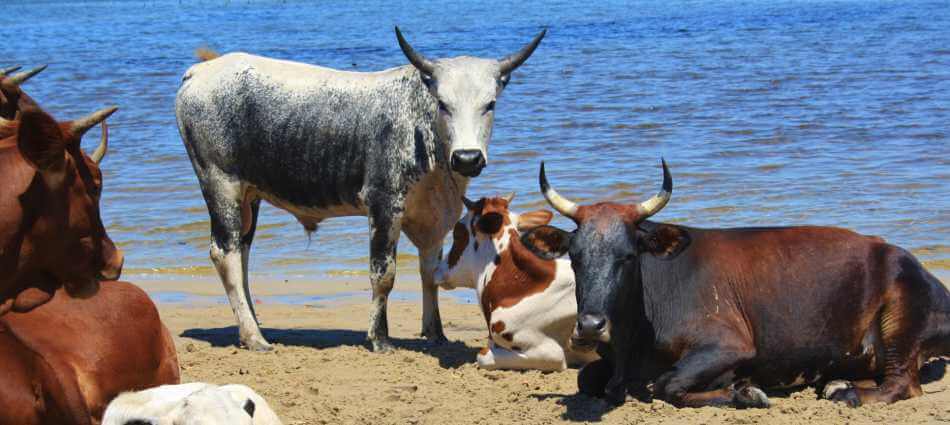
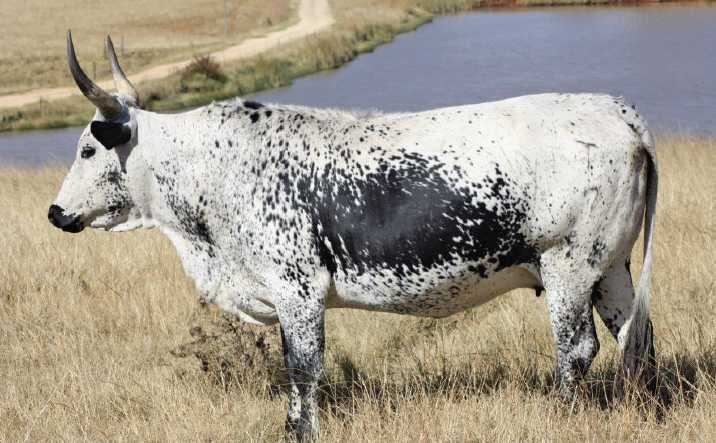

To view other African cushions, return to our African game skin cushion main page
Facts about this animal
Nguni cattle derive their name from the black tribes of Africa, collectively known as the Nguni people. Nguni cattle descend from both Bos Taurus and Bos Indicus cattle and entered Africa around 8000 years ago. As the tribes migrated south into Africa they took their cattle along. Through natural selection and environmental interaction the cattle evolved into the hardy breed we know today as the Nguni. As the tribes settled in different areas, distinctive cattle ecotypes developed, but are essentially still Ngunis.
Bulls
are medium sized and weigh between
500kg and 800kg. They are muscular
and display typical male
characteristics with well developed,
muscular, cervico-thoracic
hump
The cows
are small and weigh between 300kg and
400kg. They are feminine with sleek,
delicate lines around the neck and
forequarter and a prominent wedge
shape with the weight in the stomach
and hindquarter area.
The coat
shows a variety of colours which may
appear as whole colours, mixed
colours or as specific colour
patterns. Six whole coat colours
under which white (Umhlope), black
(Mnyama), Brown (Emfusi), Red
(Embomvu), Dun (Mdaka) and Yellow
(Mpofu) exist in Nguni cattle, while
eight colour patterns occur. The Zulu
names appear in brackets. Besides the
fact that there are theoretically 48
colour patterns the Zulu and Swazi
people describe 77 different colour
patterns in order to ease
identification and ownership of
cattle. These different colours and
colour patterns are playing a very
important role in the social and
cultural life of the African
people.
Horns
are crescent-shaped in bulls and
characteristically lyre-shaped,
thinner and longer in mature females.
They are round in cross-section and
dark, especially at the tips.
Factsheet
Scientific classification
- Name: Bos taurus
- Conservation status: Least concern / abundant








